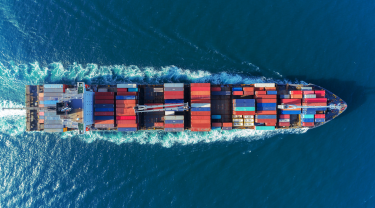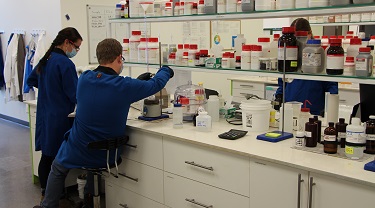By now, we should be over this. COVID-19 shipwrecked the economy 22 months ago, and the rescue is still on. This will likely be logged as one of the most protracted rescue efforts on record. True, most of the passengers are safe and back to their normal lives, but a good number are still drifting around the debris, while others have yet to surface—and it’s getting pretty critical. What’s the latest status check on the Canadians among these three groups?
Well, let’s look at the manifest. For the economy, that’s the gross domestic product (GDP) data by industry—one of the better gauges of the rescue effort—which just came out last week. A brief scan of the data from September tells the tale. While most continue to make progress, four key groupings stand out in the data.
1. Soaring: These are the lucky ones or maybe the plucky ones. They’re now comfortably above pre-pandemic levels of activity, and for the most part, growing. Perhaps the most solid is the finance and insurance industry, now up 6% over pre-COVID-19 levels. Computer and electronic product manufacturing is also up there. Food and beverage producers have been solid performers throughout, and output continues to grow. From here, there’s a cluster of industries, including wood products, retail and mining, among others, that by and large are doing well, although supply chain constraints have taken a bit of the shine off performance.
2. Surfacing: Industries in this category are happy just to get back to pre-pandemic production. Each of them is close, but not quite there yet. Machinery manufacturing is growing steadily and is at the top of this category. Wholesale trade is up, but has done better in past months and is currently being dogged by supply chain woes. The plastics and chemical industries are also in this group, capitalizing on the strong rebound, but vulnerable at the moment to stop-start production. Paper products have benefited from the packaging side of the industry, as retailing has seen a big shift to doorstep delivery. Construction also makes it in to this level, buoyed by hot residential construction.
3. Sinking: A special category is reserved for industries that rebounded, only to go into relapse. Perhaps the most serious case is autos and auto-parts production. Initially in full-blown shutdown, pan-industry output had a rocket-fuelled recovery, rising quickly to 107% of pre-pandemic production. Shortages of semiconductor chips have pummeled production, which has sunk steadily to about 59% of early-2020 levels. Demand is not the issue here; people want cars, they just can’t get their hands on one. Recent updates indicate that relief may come early in 2022, as chip production and deliveries rise again.
4. Submerged: I’m not sure how long one can stay in this state, but many industries are still toughing it out below the surface. Thankfully, oxygen tanks have been supplied, but for far longer than planned. Arts and entertainment is still way down in the chasm, although at long last it’s mounting a modest comeback. No surprise that this space is shared by the aerospace industry, other transportation manufacturing, transportation and warehousing and the textiles and clothing industries. Have you noticed? Nobody’s wearing suits anymore—for now, at least.
Some comfort can be taken in the fact that Canada isn’t alone; global production platforms are ensuring that the pain felt by some industries is generally shared by all in the same industry. Concentration of production in efficiency clusters has essentially made production universally compromised. It has also rebooted lots of talk—and some nascent action—on creating production redundancies, or near-shoring things to ensure viability in times of compromised supply. We’ve heard this all before—but this time, the length of the downturn and its associated costs are making a viable case for long-term reliability of production against short-term cost savings. Short-termers have won out in the past; we’ll see soon enough which argument prevails.
The bottom line?
Help is nearby, but this time it’s not publicly funded life-preservers. Now, it’s core demand, which is great news because as we free up capacity to meet demand, the rescue here is sustainable, not stop-gap. Price spikes are ensuring that attention is being focused on the greatest areas of need, a development that hopefully will taper off as grosso modo, things get going again. Seems fanciful, but we’re at that stage again. There’ll be smiles all over when the last passengers board ship. Hang in there!
This commentary is presented for informational purposes only. It’s not intended to be a comprehensive or detailed statement on any subject and no representations or warranties, express or implied, are made as to its accuracy, timeliness or completeness. Nothing in this commentary is intended to provide financial, legal, accounting or tax advice nor should it be relied upon. EDC nor the author is liable whatsoever for any loss or damage caused by, or resulting from, any use of or any inaccuracies, errors or omissions in the information provided.








